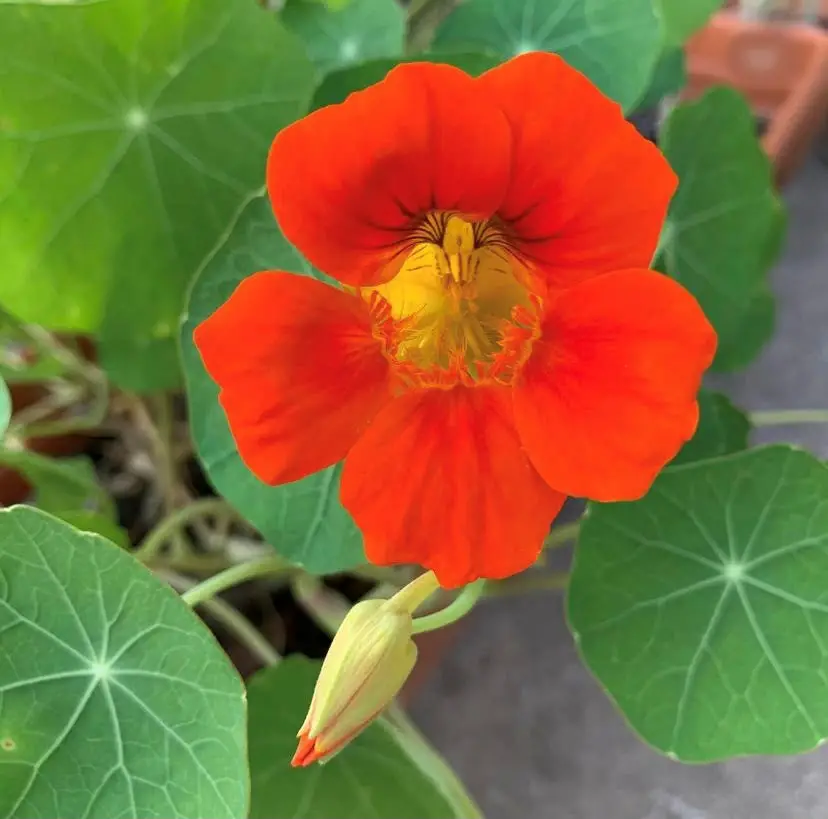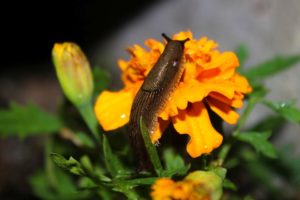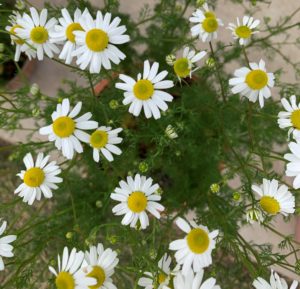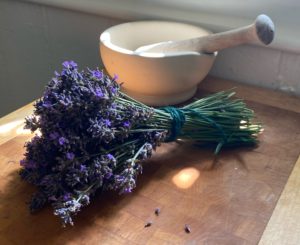Nasturtiums are annuals that have round, partially scalloped leaves that resemble water lily pads. The vibrant blooms, which are funnel-shaped and have a short spur on the underside, come in a variety of colors including golden yellow, orange, red, and crimson.
Native to Central and South America, there are more than 100 varieties of nasturtiums, which can be sorted into categories: trailing, climbing (vining), and bush (dwarf) varieties.
There are many benefits to growing nasturtiums. In addition to their beauty, the flowers and leaves are edible and are often used to add a peppery flavor to salads. They provide a source of vitamin C, iron, beta-carotene, and manganese. They are high in antioxidants like lutein, and according to a number of studies, the essential oil and compounds from various parts of the plant have antimicrobial, antifungal, hypotensive, expectorant, anti-inflammatory, and anticancer effects.[1]
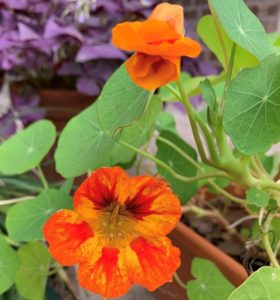
In addition to potential health benefits, nasturtiums can play a beneficial role in both attracting pollinators to your garden and protecting certain crops from unwanted insects. (See below for more information on nasturtiums and insects.)
This article contains affiliate links. If you make a purchase using one of these links, I will receive a very small commission at no additional cost to you, and it will help me maintain this website. Rest assured, I only recommend products I actually like!
How to Plant
Nasturtiums prefer cool summers and do best in temperatures 80oF (27oC) and below. They can, however, tolerate higher temperatures but will not produce blooms until temperatures cool.
Although it is possible to start nasturtium seeds indoors, it is best to direct sow them as their roots are sensitive to disturbance. However, if you choose to plant seeds indoors and transplant them after the true leaves appear, you can start two to four weeks before the last frost date in the spring using peat pots or other biodegradable pots so that they can be transplanted directly into the ground without disturbing the roots.
The large seeds contain a thick seed coat like okra and beet seeds. Thus, it can be helpful to soak the seeds in warm water and leave them overnight. This process, known as seed scarification, will soften the coating and increase the chances for germination. Unlike carrot seeds, which require a bit of light to germinate, nasturtiums need a dark environment. Thus, the seeds will need to be planted 1/2″ to 1″ deep and about 8″ to 12″ apart if growing in the ground or raised beds. Seeds should germinate in about 7 to 14 days. If you have mild winters you can plant seeds in the fall so that you will have winter color in your garden.
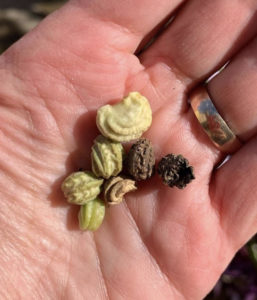
Nasturtiums work well in a variety of containers. The trailing varieties will spill over the edge of the container while the climbing or vining varieties work well if placed next to a trellis or similar structure. Bush or dwarf varieties work well in containers in areas where you want the growth to be “contained.”
Sun and Water
Nasturtiums do best with six or more hours of full sun. They can tolerate some shade but they will not produce as many blooms. Conversely, too much sun or heat can stress them and cause them to stop blooming altogether.
Water the plants when the top inch of soil feels dry. Water thoroughly, but do not overwater. They can tolerate short periods of drought but grow better when watered regularly.
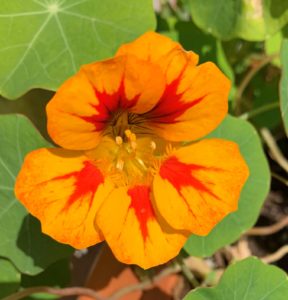
Soil and Fertilizer
One of the many reasons nasturtiums are so popular is that they can grow in just about any kind of soil as long as it is well-draining. It is often said that they thrive on neglect. In fact, if you fuss over them too much it may just backfire. These garden beauties normally don’t even require fertilizer, unless you are growing them in a container where they will benefit from an occasional balanced fertilizer. But overall, too much nitrogen will cause an increase in foliage but a decrease in flowers.
Pruning
If the plant becomes too stringy looking you can prune it back as needed. Pruning will encourage new growth. Although deadheading (the removal of spent flowers) is not completely necessary, it will encourage the plant to continue producing flowers.
Saving or Eating Seeds
Nasturtiums are prolific seed producers and will easily self-seed. Or if you would rather, you can collect the dried seedpods from the plant and the ones that have fallen to the ground. Make sure the seeds have completely dried out before you store them in a seed bag and envelope in a cool dark place.
The seeds can also be used as a substitute for capers. These poor man capers, as they are often called, are made by picking the seeds when they are still green and firm, and then fermenting them in a brine, followed by pickling.
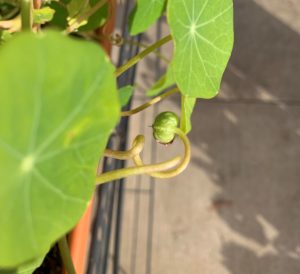
Nasturtiums as a Pest Repellant
Another benefit of growing nasturtiums is that they tend to attract certain kinds of garden pests, especially aphids. This may not seem like a good thing at first, but you can use it to your advantage. When planted near certain vegetables, like broccoli and spinach, nasturtiums act as a trap crop to lure unwanted insects away from preferred crops. And when planted near other crops, like cucumbers, squash, and zucchini, they will act to repel certain insects like cucumber beetles, whiteflies, squash bugs, and squash vine borers.
Nasturtiums are also said to deter rabbits and deer because of their peppery taste. However, some gardeners report that some rabbits actually think nasturtiums are tasty treats! Thankfully, the plant, including the flowers, are not toxic to animals.
Diseases
Aster Yellows is caused by a pathogen that is carried by aster leafhoppers. The disease is characterized by leaves that are pale green to yellow or even white. Growth is stunted and flowers are not properly formed. Sometimes several thin stems may grow close together to form what is called a witches’ broom. If your plant has Aster yellows it will need to be pulled and destroyed. Do not compost it as most compost piles do not maintain high enough temperatures to kill the pathogen.
Clubroot is another disease that can strike nasturtiums. Roots develop clubs or galls which hinder water and nutrients from traveling up the roots to the rest of the plant. Symptoms include yellowing and wilted leaves and stunted growth. Clubroot usually occurs in acidic soil. Test the toil using a pH test kit and add lime if necessary to raise the pH. Be sure to follow package directions.
Mosaic Virus is characterized by a light and dark green mottled pattern on leaves. The flowers may be affected as well. Aphids and leafhoppers can both transmit the virus to your plants. Therefore, the best treatment is prevention by eliminating these pests. You will need to pull and destroy the affected plants. Do not compost them.
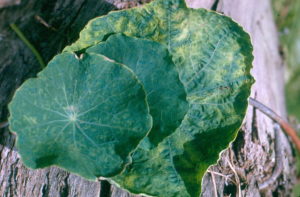
Pests
Aphids, cabbage loopers, leafhoppers, flea beetles, leaf miners, and whiteflies target nasturtiums which is why they are used as trap crops to lure these destructive pests away from vegetable crops to the more expendable annual. Organic methods for treating these pests can be found in the corresponding articles.
Varieties
There are many varieties of nasturtiums to choose from. Here are some of the more popular ones grouped by type.
Bush Varieties, also known as compact or dwarf varieties, are perfect for containers, hanging baskets, window boxes, or gardens with limited space. These varieties include:
- Alaska Mix has variegated foliage and a mix of colored flowers.
- Jewel Mix also has a variety of bloom colors. These should not be confused with Jewel of Africa (see below).
- Empress of India has crimson-red flowers and leaves that are somewhat darker than most other nasturtiums.
- Peach Melba is another bush type that has yellow flowers with orange-red centers.
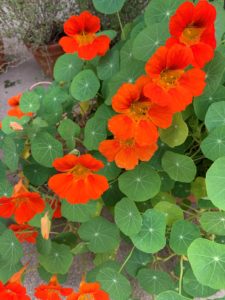
Trailing or Climbing (Vining) Varieties can be used to fill in large empty spaces in the garden or trained to climb fences and trellises:
- Jewel of Africa can climb heights of several feet or they can spread out horizontally to cover an area. They have variegated foliage with jewel-toned flowers that include red, gold, peach, yellow, and cream.
- Indian Cress is the common garden nasturtium. It has red, yellow, and orange blooms.
- Tall Trailing Mix is another variety that will cover a large space, up to ten feet per plant. They produce red, orange, and yellow flowers.
- Fiesta Blend is a blend of orange, yellow, and orange-peach bi-color blossoms. This variety is what is featured in this post.
Nasturtiums are prolific annuals that are easy to grow. Their unique characteristics can benefit you and your garden in a variety of ways including as a source of beauty, nutrition, and pest control.
Thank you for reading this article! If you found it helpful, please consider sharing it with others via email or social media!
[1] Jillian Levy, Nasturtiums: The Medicinal Herb with an Antioxidant-Rich, Flavorful Kick, 8-13-20, accessed 4-4-21, https://draxe.com/nutrition/nasturtium/
